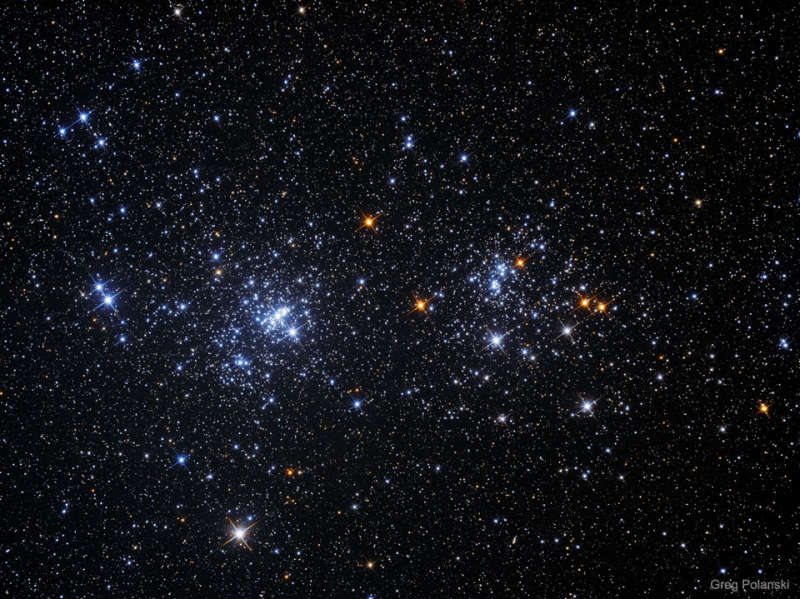 |
Астронет: Астрономическая картинка дня Двойное звездное скопление в Персее http://variable-stars.ru/db/msg/1707667/eng |
Credit & Copyright: Greg Polanski
Explanation:
Most star clusters are singularly impressive.
Open clusters NGC 869 and NGC 884,
however, could be considered doubly impressive.
Also known as "h and chi Persei", this unusual
double cluster, shown above, is bright enough to be seen from a
dark location without even
binoculars.
Although their discovery surely predates
recorded history, the Greek astronomer
Hipparchus
notably cataloged the
double cluster.
The clusters are over 7,000 light years distant toward the
constellation
of Perseus,
but are separated by only hundreds of light years.
In addition to being
physically close together,
the clusters' ages
based on
their individual stars are similar - evidence that both
clusters were likely a product of the same
star-forming region.
Authors & editors:
Robert Nemiroff
(MTU) &
Jerry Bonnell
(USRA)
NASA Web Site Statements, Warnings,
and Disclaimers
NASA Official: Jay Norris.
Specific
rights apply.
A service of:
LHEA at
NASA /
GSFC
& Michigan Tech. U.
